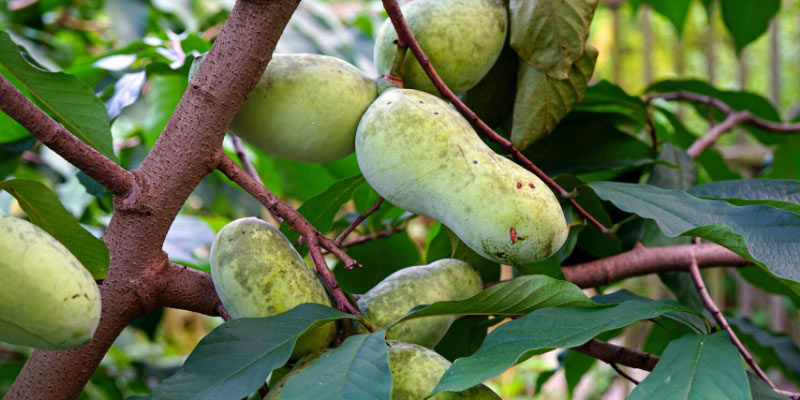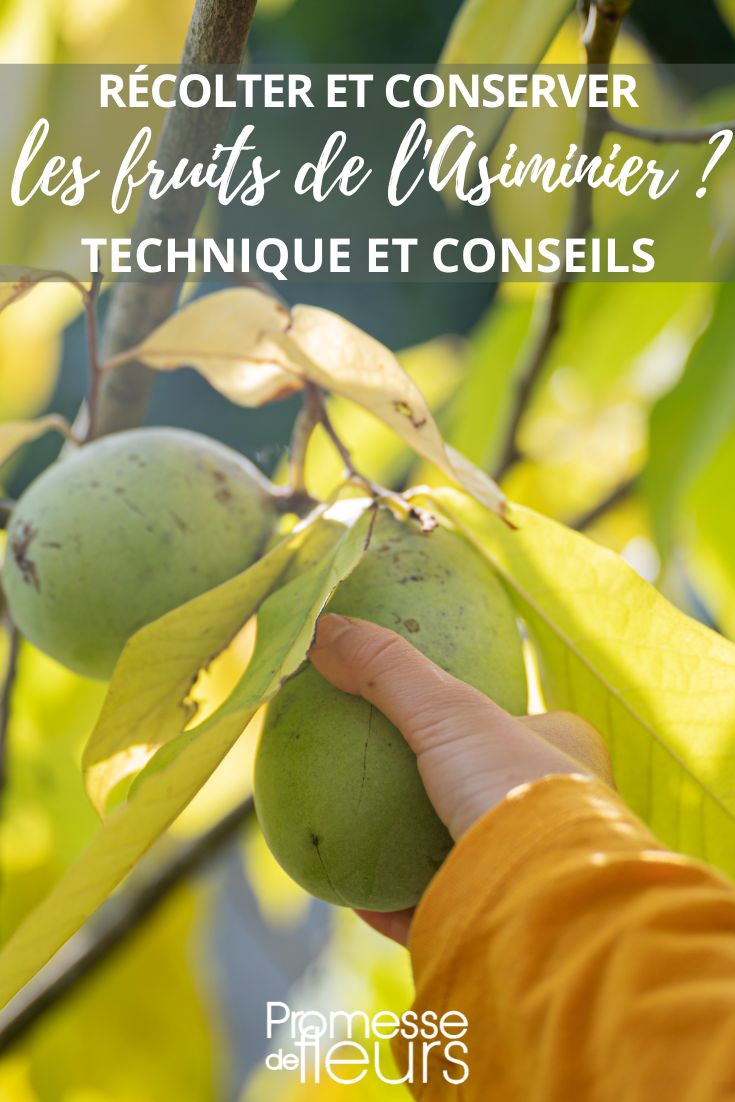Asiminia tree , also called Pawpaw, is a little-known and rather rare fruit tree in gardens. It is native to North America and produces delicious fruits, whose flavour recalls mango and banana. It is a very hardy tree, able to withstand temperatures down to -25 °C. Discover in this tutorial all our tips to harvest its fruits, preserve them and use them!
For more information on Asiminier and how to cultivate it, feel free to consult our full sheet: "Asiminia tree, Paw paw: to plant, to grow, to harvest"
Asiminia tree : what is it?
Asiminia tree, known by the scientific name Asimina triloba, is a deciduous fruit tree native to United States and Canada. Its fruits do not travel well and are therefore not marketed in Europe, which explains why Asiminia tree is little known there. It forms a small tree with a pyramidal habit, and in our gardens it generally does not exceed 5 or 6 m in height at ripeness. It bears large leaves, 15 to 30 cm long, which turn golden yellow in autumn. It flowers in March–April and bears pendulous bell-shaped flowers in deep red–purple–chocolate tones, made of six strongly veined petals. Asiminia tree usually begins to fruit after 4 to 6 years of cultivation. Flowering is then followed by the appearance of ovate, rather elongated fruits, grouped in bunches of 3 to 7 fruits. They measure between 10 and 20 cm long, weigh between 180 and 250 g, and resemble small green mangoes. They have a smooth skin, yellow or green-yellow at ripeness. Flesh is yellow, sometimes orange and bears two ranks of large black seeds, not edible. Their creamy pulp is appreciated, its sweet and tangy flavour lies between mango, pineapple and banana.
New varieties of Asiminia trees are often self-fertile ('Prima', 'Sunflower'...), which means a single tree is enough to have fruits. Other varieties, however, require the presence of at least two young plants for them to fruit.

When and how to harvest its fruits?
Asiminia tree fruits are picked when they reach ripeness, generally between late August and mid‑October. Fruits are harvested when they detach easily and are slightly soft to the touch, but before they become too browned. Pawpaws do not all ripen at the same time: the harvest usually stretches over three to six weeks. You can also place a net under your tree to collect pawpaws when they fall, thus preventing them from becoming damaged.

How to store them?
Once harvested, fruits keep only a few days at room temperature. We recommend placing them in the fridge, where you can store them for up to two or three weeks if they show no bruising. It is also possible to freeze the pulp, after removing skin and seeds. When you want to use it, simply defrost and prepare in smoothies, cakes, tarts… Finally, another option is to preserve them in processed form, as compote or jam for example.
How to cook them?
Fruits can be eaten fresh, as is, somewhat like avocado: cut in half then scoop out flesh with a spoon; at ripeness it detaches easily from the skin. However remove the seeds, as they are not edible. Fruits are also excellent in juices, smoothies, fruit salads… They can be made into compotes, jams, ice creams and sorbets… For cooking, consider pawpaw as a substitute for banana in recipes for cakes, muffins or pastries. Its creamy texture and exotic taste add an original touch to desserts.
Discover our full range of unusual and exotic fruit trees

































Comments